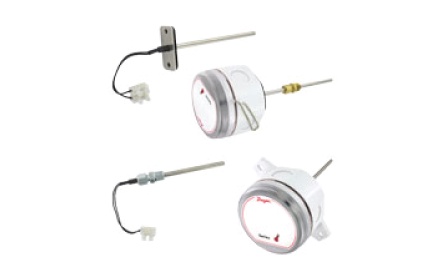One of the most often measured environmental parameters is temperature. Since temperature has an impact on the majority of physical, electrical, chemical, mechanical, and biological systems, this is quite expected. Only a few temperature ranges are optimal for the performance of specific chemical reactions, biological functions, and even electrical circuits.
It is not surprising that there are numerous methods for measuring temperature because it is one of the variables that is most frequently monitored. Direct contact with the heating source is one way to measure temperature; another way is to measure temperature remotely using radiated energy. Thermocouples, Resistance Temperature Detectors (RTDs), Thermistors, Infrared, and Semiconductor Sensors are just a few of the many types of temperature sensors available today.
Temperature sensor Types
Thermocouple: This sort of temperature sensor is created by combining two metals that are different from one another at one end. The HOT JUNCTION is the name given to the united end. The COLD END or COLD JUNCTION refers to the opposite end of these different metals. The final point of the thermocouple material is where the cold junction is produced. A minor voltage is produced if the hot junction and cold junction have different temperatures. This voltage, also known as an electromotive force (EMF), can be measured and utilized to determine temperature.
I/C sensors
To make the widest range of temperature monitoring difficulties as simple as possible, a large array of temperature sensor ICs are readily available. These silicon temperature sensors are notably different from the kinds discussed above in a few key aspects. The working temperature range comes first. An integrated circuit (IC) temperature sensor can function within its nominal temperature range of -55°C to +150°C. The functionality is the second key distinction.
A silicon temperature sensor can contain significant signal processing circuitry because it is an integrated circuit and comes in the same package as the sensor. With temperature sensor ICS, compensation circuits are not required.
Several of these have outputs for voltage or current and are analog circuits. Others provide alert features by combining voltage comparators and analog-sensing circuits. Other sensor ICs are a great option for microprocessor-based systems because they mix analog sensing circuitry with digital input/output and control registers.
The analog-to-digital converter (ADC), two-wire digital interface, temperature sensor, and registers for operating the IC are often found in the digital output sensor. Temperature is regularly monitored and is always readable.
The host CPU can direct the sensor to track temperature if required and to drive an output pin high (or low) if the temperature rises above a preset threshold. The host can be informed when the temperature drops below a lower threshold temperature that they have programmed. Hence, in microprocessor-based systems, the digital output sensor can be employed for accurate temperature monitoring.
Sensors for digital temperature: When using digital temperature sensors, there is no need to calibrate system components or the application at specific reference temperatures as there is when using thermistors.
The primary benefit of a digital temperature sensor is its accurate readout in degrees Celsius. Digital readings that are in balance are the sensor output. This has no additional parts intended and is considerably easier to use than a basic thermistor, which produces a non-linear resistance as a function of temperature.


No comments yet